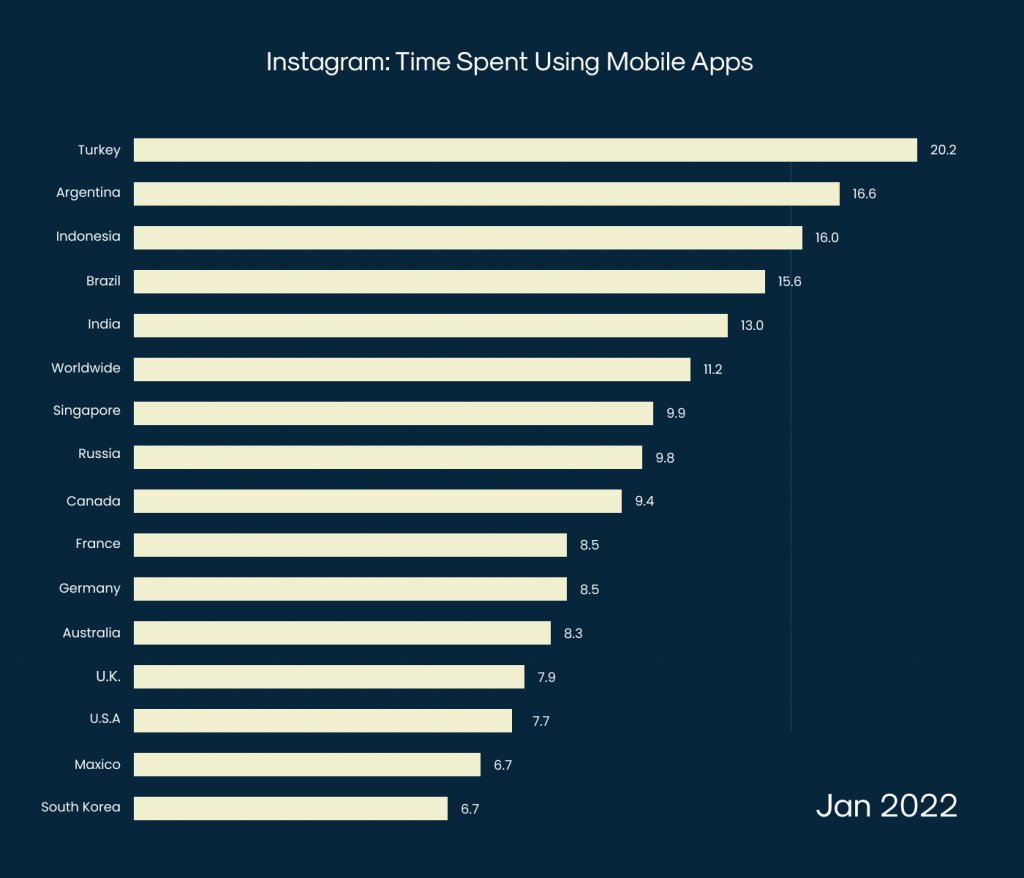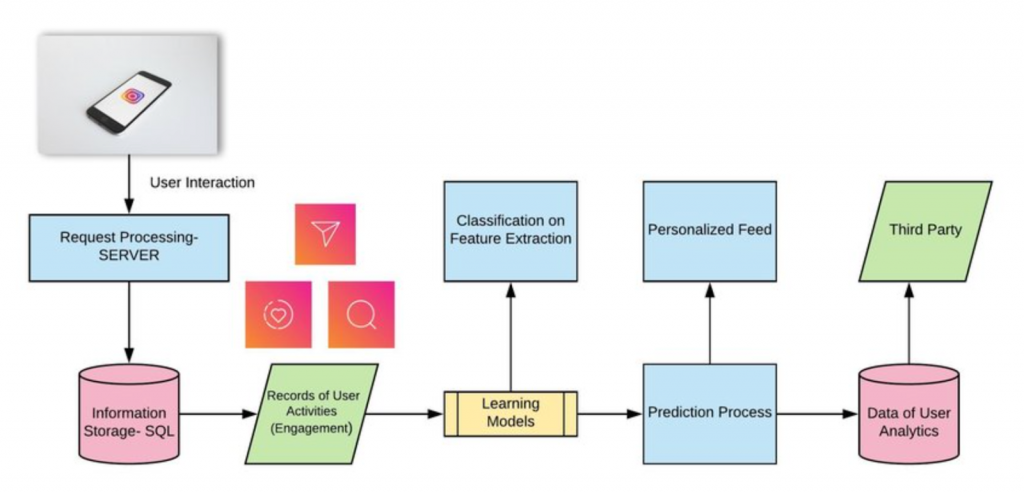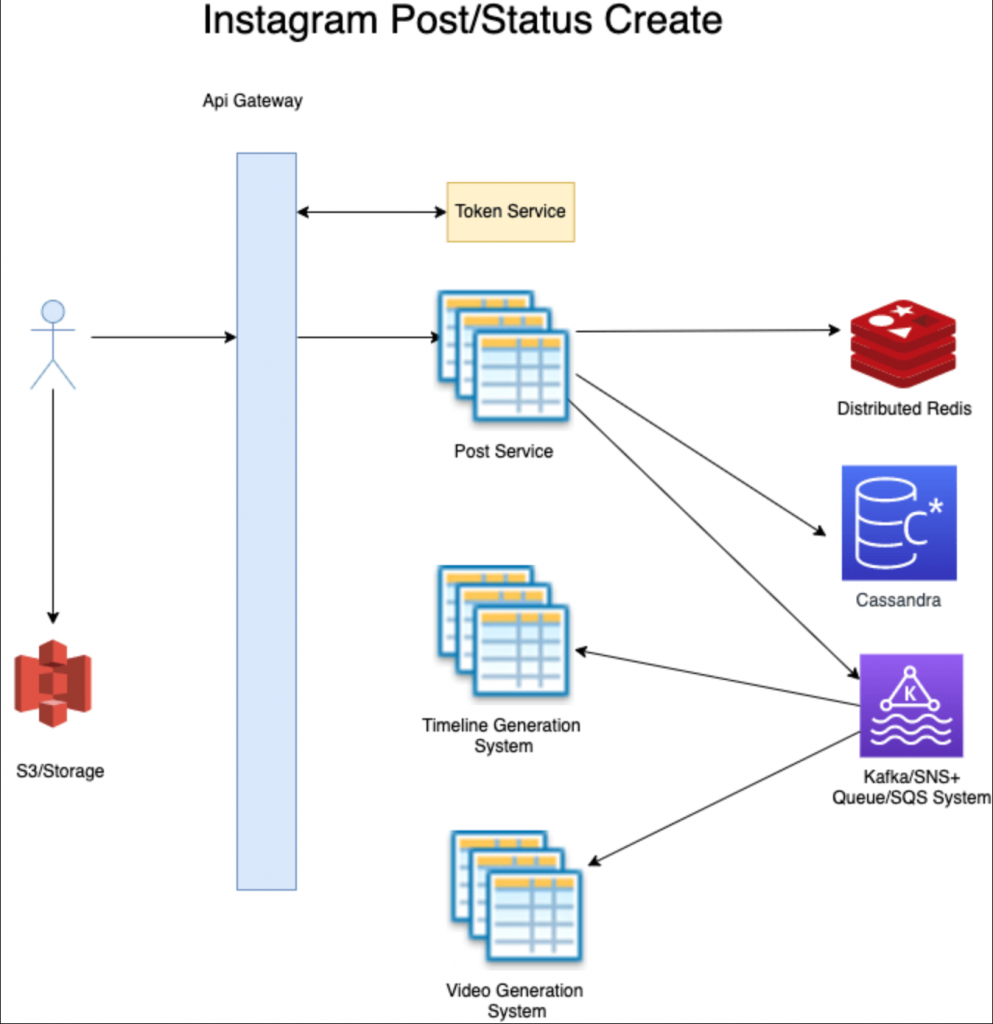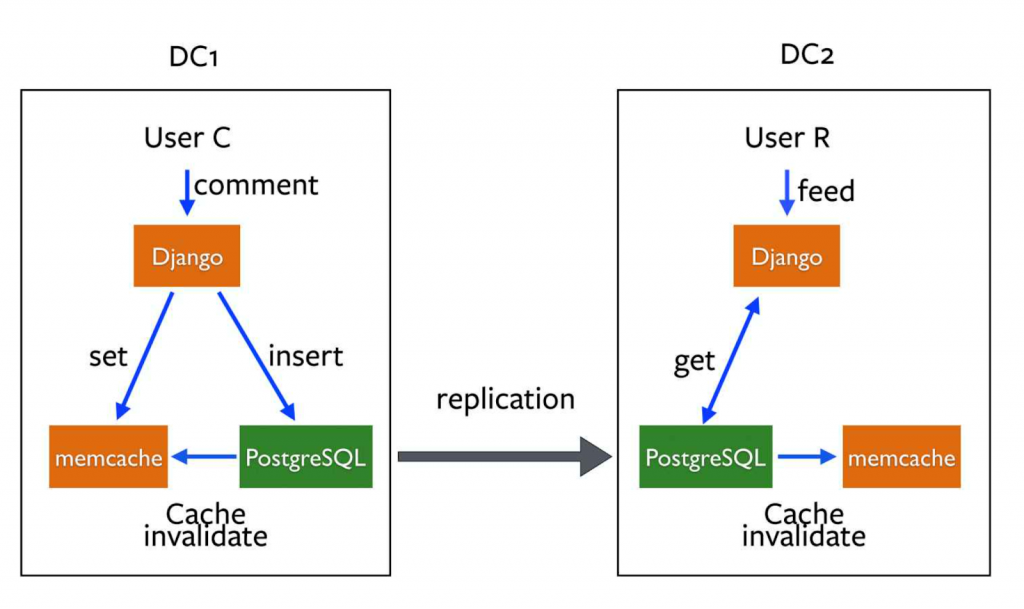With more than 2 billion active users, Instagram is right now World’s 4th most popular social media platform and 8th most visited website in the world. Launched in 2010 as a competitor for FourSquare, Instagram swiftly attracted a mass of active social media users, as the application pivoted its offerings, and become the world’s most sought-after image-sharing platform.
Hugely popular among the younger generation (60% of users are aged between 18-30), Instagram generated ad revenues of $42 billion in 2022, as advertisers flocked to Instagram to showcase their products and services and attract more eyeballs.
Facebook acquired Instagram in 2012, for $1 billion in cash and equity, making it one of the most expensive acquisitions in the Internet space.
Here are some interesting statistics about Instagram:
- 100 million photos and videos are uploaded on Instagram every 24 hours
- Around 800 million users access Reels every day (short videos)
- Reels are shared 1 billion times every 24 hours
- An average American use Instagram for 30 mins a day
- Initially, only square (1:1) images were allowed to be uploaded, to match the display of iPhones, but later, other aspects were also allowed
- More than 500 million users access Instagram daily, across the world
- Almost 70% of all Instagram posts are branded (business-linked)

Time Spent by Users On Instagram
It’s really fascinating, how Instagram is able to handle millions of users, billions of images and videos, and is able to provide a seamless user experience, day after day.
Behind its success lies a robust and scalable architecture, carefully designed to accommodate the ever-growing user base while maintaining reliability and delivering an unparalleled user experience.
In this blog, we will delve into the architecture and design of Instagram, exploring how the development team ensured scalability, reliability, and a seamless user experience. It will also give us insights into how a mobile app development company ensues growth with an app engagement model.
The Powerful Backbone: Decoding System Architecture Of Instagram
Instagram’s system architecture follows a distributed and scalable model to handle the immense volume of user-generated content and interactions. The architecture can be divided into the following key components:
Client Applications
Instagram’s client applications run on various platforms such as iOS and Android. These applications serve as the interface between the user and the system. Client applications provide features such as photo/video sharing, feed browsing, direct messaging, and more for the users, thereby inspiring more engagement and action.
The client applications communicate with the backend servers via APIs (Application Programming Interfaces).

System Architecture Of Instagram
Load Balancers
To handle a large number of user requests, Instagram employs load balancers, which distribute incoming requests across multiple servers to ensure optimal resource utilization and prevent any single point of failure.
They play a crucial role in achieving high availability and scalability.
Web Servers
Instagram utilizes web servers to handle HTTP requests and serve static content.
These servers are responsible for rendering user profiles, feed, and other web-based features.
By employing techniques like caching and content delivery networks (CDNs), Instagram enhances performance and reduces latency for users accessing the platform via web browsers.
Application Servers
The application servers are responsible for processing complex business logic, executing user requests, and managing data interactions.

They handle operations such as user authentication, post creation, notifications, and interactions with external services. Instagram utilizes a horizontally scalable architecture, allowing for the addition of more application servers as the user base expands.
Databases
Instagram employs a combination of relational and NoSQL databases to handle its diverse data requirements. Relational databases are used for storing structured data such as user profiles and relationships, while NoSQL databases, such as Cassandra and Redis, are used for scalable storage of user-generated content, including photos, videos, and comments.
Content Delivery Network (CDN)
To ensure quick and efficient delivery of static content, Instagram leverages a CDN. By caching frequently accessed images, videos, and other media assets in geographically distributed edge servers, the platform reduces the load on the backend servers and minimizes latency for users across the globe.
Amazing Scalability Of Instagram: Supporting Billions Of Users
100 million images being uploaded daily, 800 million users of Reels daily, and 2 billion active users! How does Instagram manage operations at this scale? It sheds light on the significance of Android and iOS app development services for highly-engaging applications.
Instagram’s architecture is designed to scale horizontally, meaning it can handle increased traffic by adding more servers to the system. Here are some key scalability measures implemented by the development team:
Sharding
To distribute the load across multiple database servers and improve query performance, Instagram employs sharding. Sharding involves partitioning the data into smaller subsets based on a chosen strategy, such as user IDs or geographical regions. Each shard is then assigned to a different database server, allowing for parallel processing and reduced response times.

Caching
Instagram utilizes caching extensively to reduce the load on backend servers and improve response times. By caching frequently accessed data, such as user profiles, feed items, and popular media, the platform minimizes the need for repeated database queries, resulting in a faster user experience.
Asynchronous Processing
To handle resource-intensive operations, such as media uploads and background tasks, Instagram employs asynchronous processing. By offloading these tasks to separate worker processes or queues, the main application servers can focus on serving user requests promptly, enhancing system responsiveness and scalability.
How Instagram Offers Impeccable Reliability & Delightful User Experience
Ensuring reliability and a seamless user experience are paramount for a social media app like Instagram. Here are some strategies employed by the development team:
Redundancy
Instagram employs redundant components at various levels of its architecture to minimize the impact of failures. Multiple load balancers, web servers, application servers, and databases are deployed in a redundant setup, ensuring high availability and fault tolerance.
Monitoring and Alerting
Instagram employs robust monitoring and alerting systems to detect any anomalies, performance degradation, or potential issues in real-time. This enables the operations team to promptly address problems and maintain a reliable user experience.
Continuous Deployment and A/B Testing
To roll out new features and improvements seamlessly, Instagram follows a continuous deployment model. This allows for frequent updates without disrupting the user experience. A/B testing is also employed to validate new features and gather user feedback before a full-scale release, ensuring a high level of quality and usability.
User Feedback and Data-Driven Iteration
Instagram values user feedback and employs data-driven iteration to enhance its features and overall user experience continually. User behavior and engagement data are collected and analyzed to identify pain points, prioritize feature enhancements, and optimize the application’s performance and usability.
The architecture and design of Instagram exemplify a successful approach to building a massively popular and scalable social media app. By implementing a distributed and scalable architecture, leveraging caching and CDNs, and prioritizing reliability and user experience, Instagram has created a platform that seamlessly handles millions of users, their content, and interactions. With a constant focus on scalability, reliability, and user feedback, Instagram continues to provide an immersive and engaging social media experience for its ever-expanding user base.
If you wish to launch an application similar to Instagram, then schedule a no-obligation consulting session with our Mobile App Engineers, and discover how we can unleash a digital and mobile transformation for your business.







